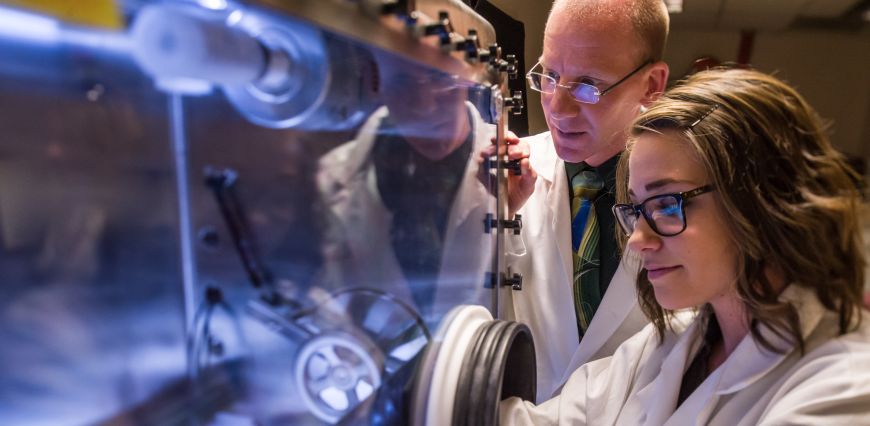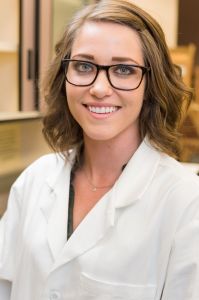
For Amanda Townsend, being awarded a fellowship means more than a free health physics education. It’s about getting the knowledge and research experience she needs in her quest for a cancer breakthrough.
“My dad has cancer. So one day, I’d like to be able to stop cancer from happening,” said Townsend, who hopes to pursue a research career.
A new $400,000 grant awarded by the Nuclear Regulatory Commission to the Department of Environmental and Radiological Health Sciences creates fellowships for Colorado State University students, including Townsend, who is pursuing a master’s degree in health physics. The field promotes the science and practice of radiation protection and safety, with cancer prevention as a frequent focus.
“This grant gives us the opportunity to recruit more students,” said Alexander Brandl, an assistant professor of health physics. “Providing educational funding is a way to get students interested in our program and to open their eyes to what they can do with a degree in health physics.”
Townsend is enrolled in a program that will allow her to earn both a bachelor’s degree in physics and a master’s degree in health physics in five years.
“I like the idea that I could get a job at a university or national lab and constantly be surrounded by research,” Townsend said. “I love the camaraderie that goes along with research and solving problems that at first seem so hard.”
Townsend has her sights set on the difficult problem of cancer.
“I was about 10 when my father was diagnosed with brain cancer,” Townsend said. “His diagnosis, along with other cancer diagnoses in my family, has led me to a career in health physics.”
Minimizing radiation exposure, preventing cancer

Townsend began her collegiate career as a physics undergraduate in pursuit of a medical physics career, treating patients who already have cancer.
“It was a little too gruesome, so I moved towards health physics – which is a science dedicated to minimizing people’s exposure to radiation. And, in that sense, preventing cancer,” Townsend said.
The Nuclear Regulatory Commission will provide the Department of Environmental and Radiological Health Sciences with $100,000 per year for four years, providing two years of tuition support and stipends for at least four academically qualified graduate students.
To receive fellowships, students apply and submit transcripts, current grade-point averages and statements of interest. Recipients must work six months in a nuclear-related field for each year of academic support. Professors help match students with employers, including nuclear power plants, universities, hospitals and national laboratories.
“The truth is, with their education, these students can work pretty much anywhere,” Brandl said.
Though she still has two years until graduation, Townsend said she is excited for the opportunities ahead.
“It’s amazing that I’ve been afforded the opportunity to complete two degrees at once, so I can start applying my physics education in a health-related career,” Townsend said. “Even working in campus labs, I can tell that I’m helping and making a difference. I can make an impact.”